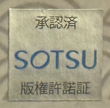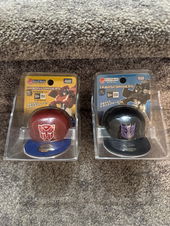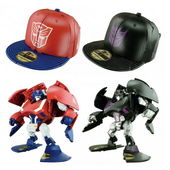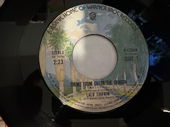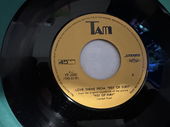Japan
12
Posts
0
Followers
Japan
12
Posts
0
Followers
Rather than post something in my collection, I figured it would be fun to go over a neat part of collecting things from a Japanese franchise. Licensing stickers!
These official licensor-issued seals attached to licensed products (especially toys, model kits, and other collectibles) prove authenticity and licensing approval from the IP holder (in this case Tatsunoko Productions and the Sotsu Agency).
The stickers often feature a series number, company logo, or maybe even a character/mascot portrait.
Collectors often use the presence of a 版権シール as a key authenticity check, especially with garage kits that were frequently recast or bootlegged.
It is also important to note that some official items do not have this sticker. For example:
Video Games were already tightly controlled by the publisher/licensee (Bandai, Capcom, Namco, etc.) and bore printed copyright notices on the box, cartridge, and manual. That was considered sufficient proof of licensing.
Books, manga, settei, and magazines relied on printed colophons (奥付) and copyright lines instead.
Stationery, apparel, and food tie-ins, most of which had nothing beyond packaging marks/logos, unless it was part of a larger toy release (I.e. Keshi blind boxes that included a toy & candy).
Tatsunoko licensing stickers have seen a number of changes over the years. Specifically, there have been three known iterations used for Kyattō Ninden Teyandee:
Early 90s stickers (bust image of Yattarō)
These stickers included internal categorization codes (I.e. A-E, on the left of the sticker) They identified which manufacturer or product line a given item belonged to.
At the time, multiple companies were simultaneously producing KNT/SPC goods. The letter system helped the licensor track royalties and contracts across product categories.
This particular version of the sticker is no longer in use.
Late 90s stickers (Sotsu)
Very to-the-point. They began simplifying the stickers to a generic silver Sotsu sticker that didn’t specify a particular character or sub-series. It’s designed to highlight Sotsu’s role as licensor rather than tie directly to the show.
承認済 (Shōnin-zumi) at the top means Approved.
The center SOTSU is the company name (Sotsu Agency, sometimes written 創通エージェンシー in earlier stickers).
版権許諾証 (Hanken kyodaku-shō) at the bottom literally means Copyright License Certificate.
By the mid-90s, licensing practices streamlined: Unified stickers were adopted instead of letter-coded ones. Internal tracking moved into contracts, paperwork, and barcodes, rather than printed codes. The goal was to give consumers one simple authenticity seal to recognize, instead of a confusing alphabet system. As a result, the letter-coded stickers are now a relic of early Tatsunoko licensing practice.
2025 and beyond (Holographic Tatsunoko seahorse)
Very recently, Tatsunoko recently started using a much more compact, fully holographic circular sticker featuring the company’s logo - the Tatsunoko seahorse. These stickers are now typically placed discreetly near the barcode or product credits.
The choice to go holographic is an anti-counterfeit measure. Earlier versions of the sticker were hard to replicate, but not impossible. Adding a holographic design makes them harder to copy. It also makes them super hard to photograph, and perhaps that’s for the best.
Both the Sotsu and Holographic seahorse stickers are currently in use today. Why?
Sotsu covers domestic retail verification within Japan’s licensing chain, while the holographic seahorse seal is Tatsunoko’s studio-level authenticity mark, often used for modern collaborations and export-ready products.
I don’t remember when I purchased this set. But I do remember it was one of the, if not the first collab between TakaraTomy & New Era. I’ve always been a huge fan of fan of New Era’s hats. Plus I loved transformers as a kid with my favorite being Soundwave 🎶📼
Including an image from online of the toys without the packaging.
Transformers and TakaraTomy did a lot of cool collabs: https://ebay.us/LzHkaC
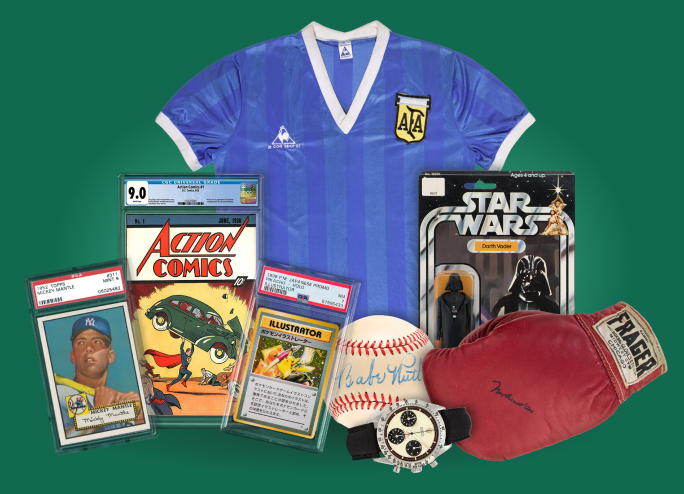
Create an account to discover more interesting stories about collectibles, and share your own with other collectors.
In
mrgarydose
Jun 11
Edited
This is a complete set of the Lawson pre-order editions of the 2nd generation Pocket Monsters games. All four games predate their North American counterparts. All four games are also from the first round of their respective pre-order lotteries. They are first edition in the truest sense of the term!
This is currently a 1-of-1 set.
I have so much nostalgia for the early Sugimori art, and the box arts of the early Pokemon games are some of the finest examples of it. These games look so great displayed alongside postcards with art by Fukuyama and Himeno, artists who are also responsible for some of the most iconic cards from the TCG.
There are five games in total that came with exclusive postcards as part of this pre-order partnership with Lawson. The one game I’m missing is also likely the rarest— Pocket Monsters Pikachu. I have a CIB copy, but there are currently only two copies graded as unopened, and a certain someone owns both of them. 👀







